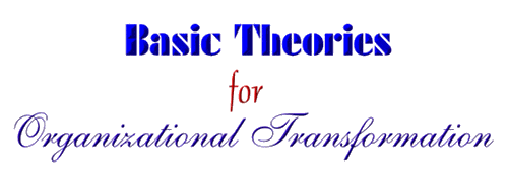

What theories to follow? Following are the ideas.
- The leaders must want to build the best profitable company in the long run.
- The leaders must believe in the powers and influences of their mind-sets and in their personal outlook and philosophy. What go on in their minds shape their company's future. They must engage in continuous learning, must study and must do their homework as an organizational developer.
- The leaders must be very customer-focused; and that in the strategy to achieve high quality and lowest cost, they must trust their people down to the workers, and must educate , train and empower them. The greater the power and involvement of the workforce, the more competitive the Company compared to companies that do not involve their people. Companies that do not involve their peeople, or which do not practice empowerment, tell only the workforce to follow blindly, trusting only on the main leaders as the grand strategists. In an empowered company, each employee is a player with its talent and core competence to contribute his/her best. The leader is the conductor of the grand orchestra. This company has the biggest chance to be a champion and leader in the industry for a long , long time.
- The leaders must ,therefore, invest in education and training.
- The leaders must , therefore, invest in information technology, development of intellectual capital, and information sharing down to the workers.
- The leaders must be responsible in keeping the systems (policies, procedures, e5tc,) in tune to the changing times. They must not accept sacred cows in business enterprises. All laws and rules are man-made and have been designed at the time as best practices to deliver quality and low cost products and services to the customers.
- The leaders must flatten the organization to facilitate and hasten communication and transparency .
- The leaders must break all barriers of communication. The Company must be "boundaryless" and cross=functional in operations.
- In the processes, all operations must be
Just-in-Time (JIT). JIT has been proven in Toyota to result in very high quality (less waste), high productivity and lowest cost products.
- The leaders must be able to energize the whole workforce with a balance incentives for recognition, growth, and a chance for wealth to improve their life (a balance for the need of recognition and money). Incentives must be directed to improve knowledge, skill, and excellent work attitude. Productivity is due to quality of work that results in less re-work and wastes. Piece-work must never be used as incentives.
- The Company must have very clear Mission, Vision, and
Quality Policy; and the leaders must be able to communicate them for sharing and acceptance. Once understood, supported, and accepted, these statements energize individuals for highly
effective teams and teamwork.
- Hence, education, education, education, training, training,training among leaders and down the workers. The cost of training is much less than the prize of ignorance: poor quality and too much waste against changing customers needs and market changes.
Finally, the Leaders start modifying systems to be conducive to the changes being envisioned, and start developing champions among all the ranks in the Organization.Click this for the stories in Stanfilco, Dole PHilippines, and Dole Asia.
 Stories of Transformation
Stories of Transformation
Books to read
(JPM: update, October 20, 1999)
-
Back to Index





 Stories of Transformation
Stories of Transformation
